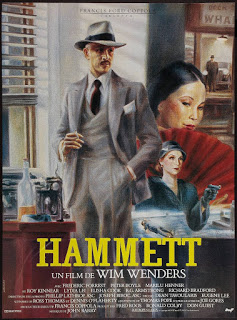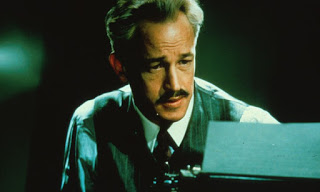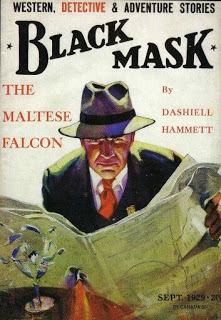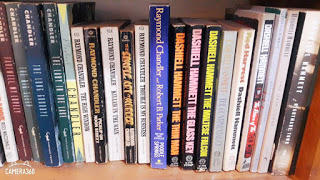Director: Wim Wenders
Year: 1982
Rating: 6.0
I am not sure exactly why but I put off watching this film for years. I
think I even had it on VHS once upon a time. Part of the reason may be that
I am a huge fan of Dashiell Hammett and I didn't really want to watch a film
about him that wasn't very good and this film didn't have a great reputation.
Hammett was to a large degree the founding father of pulp hard-boiled detective
novels. Everyone followed in his footsteps. One of those that followed was
Raymond Chandler who wrote “Hammett gave murder back to the kind of people
that commit it for reasons, not just to provide a corpse; and with the means
at hand, not hand-wrought dueling pistols, curare and tropical fish.” Hammett
took what has been termed the Cozy Mysteries ala Agatha Christie and made
them decidedly un-cozy. His writing is sparse and spartan with beautifully
turned phrases and great descriptive passages.
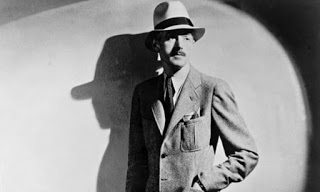
The first time Sam Spade in The Maltese Falcon sees the femme fatale Hammett
writes this "A young woman came through the doorway. She advanced slowly,
with tentative steps, looking at Spade with cobalt-blue eyes that were both
shy and probing. She was tall and pliantly slender, without angularity anywhere.
Her body was erect and high-breasted, her legs long, her hands and feet narrow.
She wore two shades of blue that had been selected because of her eyes. The
hair curling from under her blue hat was darkly red, her full lips more brightly
red. White teeth glistened in the crescent her timid smile made."
There are only two authors who I re-read - Hammett and Chandler. Every five
years or so I go through their novels and it feels as fresh as it did the
first time. I may recall the basic plot but the pleasure is in the writing.
Fortunately or perhaps unfortunately neither of them wrote a lot of novels
(though plenty of short stories) - Hammett wrote five and Chandler seven.
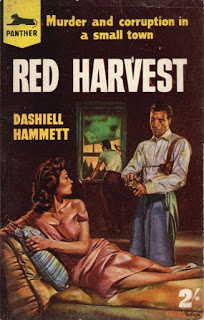
Hammett was born in 1894 and at a fairly young age began working for Pinkerton
Detective Agency. Pinkerton was the premier agency at the time with a national
reach. One of his jobs was to break up union strikes - something that bothered
him all of his life as he had leftist views and he eventually joined the Communist
Party in the 1930's which caused him major problems later when the HUAC hearings
and the Red Scare came around. In 1922 while living in San Francisco he began
writing short stories based on some of his cases and the people he came across
that were published in magazines like Black Mask. During WWI he had joined
up to serve in an Ambulance Service and while overseas he contacted tuberculosis
that wasn't helped with his drinking and smoking. He coughs a lot in this
film.
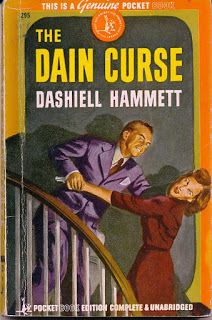
The film creates an imaginary chapter in Hammett's life - right before his
first successful novel - Red Harvest in 1929 - when he is writing for pulp
magazines and living in a run down low rent apartment. In this story Hammett
(Frederic Forrest) is pulled into a case by an old friend and fellow Pinkerton
Agent (Peter Boyle) who is looking for a Chinese girl in Chinatown and so
is everyone else including the cops. Along the way, like in any decent noir,
Hammett is deceived, beaten up, has his life threatened, has the cops warn
him off and smokes too much. The film comes across as a too polished tribute
to noir films with a special emphasis on The Maltese Falcon even including
a Gutman type and a gunsel played by David Patrick Kelley who is famous for
his creepy role in The Warriors ("Warriors, come out to play"). Throw in an
actual black falcon statute on Hammett's desk and a taxi driver played by
the original gunsel, Elisha Cook Jr.
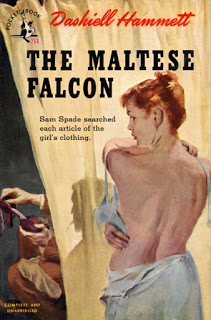
But it never captures the proper mood as hard as it tries - and part of
the reason why is the interesting backstory of the film. It was produced
by Francis Ford Coppola and his studio Zoetrope. The studio made some great
films of course but they had just produced the film One from the Heart with
Forrest and it had bombed badly and this studio bound look and slick feel
to it was painfully artificial. The same thing with Hammett. All the dark
Chinatown alleyways and brothels feel totally artificial. There is no smell
of corruption coming off of them. Coppola had hired the German director Wim
Wenders to direct. Wenders had yet to make his most famous films (Wings of
Desire being one of my favorite films ever), but he had directed enough films
to distinguish himself as an eclectic independent auteur. It doesn't strike
me that this fairly conventional mainstream film was a good fit for him.
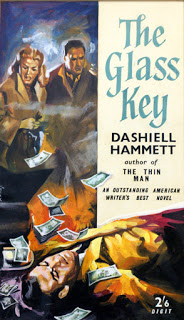
He directed the film on the real streets of San Francisco with Brian Keith
doing the Peter Boyle role and Ronnie Blakely doing the Marilu Henner role
as the girl downstairs. Orion which was financing the film hated it. Completely.
So they re-did it - completely - some saying Coppola took over but Wenders
claiming that he directed most of this version as well - and it was all filmed
inside and it is hurt by that. Apparently, the first version was tossed out.
Kind of criminal.
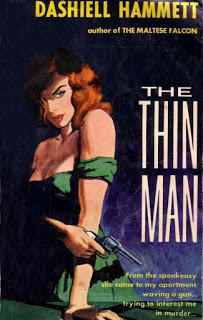
As it turns out it isn't a bad film though it feels like it is coloring
within the lines of a real noir. Forrest is its main strength and near the
end gives a terrific monologue. Hammet would go on to fame with his books
and the film versions of them - in particular The Thin Man series and of
course the Bogart version of the Maltese Falcon. He also would go to become
a scriptwriter in Hollywood where the pay was much better than from his books.
It didn't work out for him - with his money he became an alcoholic going
on benders for weeks - trying to write in his few periods of sobriety but
after The Thin Man in 1934 Hammett never really wrote again other than a
script for the second Thin Man film. His talent just vanished.
